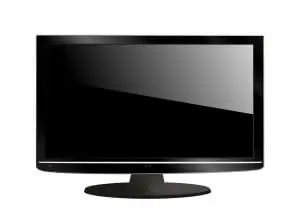By Andrew Hill
Television sets have made incredible strides in technology since the first commercial TV sets were sold.
In 1927, Philo Farnsworth debuted the world’s first working television, but the boom in TV sales came after World War II with black and white sets. The first commercial color TV broadcast was an episode of the Ed Sullivan Show on WCBS in New York City in June 1951.
From those beginnings, the rise of TV in America became a tidal wave, driven by hit shows on ABC, CBS and NBC. With only three national networks, Americans shared national events on TV like the SuperBowl, space missions, the Macy’s Thanksgiving Day Parade — and the final episodes of “MASH,” “Cheers” and the famed “Who Shot JR?” episode of “Dallas.”
In a major advance for world civilization, the remote control was invented by Zenith in 1950. It spurred the sale of untold millions of recliners — and launched a new phrase, the coach potato.

The home video tape recorder debuted in 1965. A format war pitted Sony Betamax vs. VHS in the mid-1970s. The battle was won by VHS, but many video enthusiasts still maintain Beta was superior in quality.
In 1979, “Apocalypse Now” was released in theatres with Dolby Surround Sound. Like many technologies that debuted in your local theatre, surround sound made its way into home TV’s, too. The next leap forward, the DVD, launched in March 1997.
Like the TV set, the medium has seen similar radical transformation. Broadcast TV led to cable and then satellite transmission. Pay-per-view was born. YouTube launched in 2005, a key step in the ongoing merger of TV and the Internet. Impressive innovation, but TV is always advancing, which leads us to….
TV Today: What to Know — and What to Buy
There’s a lot to consider when selecting the right television. Finding the perfect TV takes a bit of homework. But the reward is a television experience right for you, your home and your viewing habits.

Deciphering the Specs
When deciding which TV to buy, start with specs and finish with personal taste. Use specs to assemble a field of finalist TV’s. Then, use your personal taste to select the picture (and thus TV) you prefer. Key specs include:
- Resolution – the number of pixels on the screen. A 1,062 x 820 TV has 1,062 horizontal rows of pixels and 820 vertical rows. More pixels means a better picture.
- Brightness – not as important in a darker room, but key in sunny rooms.
- Contrast – the TV’s ability to produce a solid black screen, a solid white screen, and all shades of grey between. Expressed as a ratio. A wider ratio means a larger number of shades — and higher quality.
Plasma, LCD, or LED?
Next, decide what type of big screen you want: Plasma, LCD or LED. Here’s an overview:
- Plasma: The first flat panel TV’s. Dark blacks, a good contrast ratio and a wide viewing angle.
- LED: The most energy efficient TV’s. The brightest screens, a big advantage in brightly-lit rooms. LED’s typically cost the most of all three formats for a given screen size.
- LCD: The least expensive of the three technologies; much of the performance of plasma and LED.
You may want to consider one of the new 3D televisions. Although you have to wear glasses to enjoy the 3D effect, it’s a fun experience for many viewers.
What Screen Size is Right for My Needs?
With higher pixel counts and the clarity of high-definition pictures, you can sit closer to a flat screen TV than you could to an old tube TV. TV screens are measured diagonally in inches. Start with your viewing distance to select the right size TV for you. A rule of thumb you can use:
- Measure the distance you’ll sit from the screen in inches
- Multiply by 60% for the minimum recommended screen size for that viewing distance. Since TV sets are made in specific sizes, round to the nearest size.
- Multiply by 75% for the ideal size for that distance. Round to the nearest screen size.
- Example: To sit seven feet from the TV, a 50” screen is the minimum recommended and 63” is ideal.
Final Thoughts
- Make sure your TV is well ventilated, behind and above the screen.
- While built-in speakers are adequate, consider a surround sound system with separate front, center and rear audio channels and a sub-woofer for those room-shaking bass tones key to special effects.
- Consider a Blu-Ray DVD player with wireless Netflix capability to harness the capability of your new TV. Wireless streaming video means immediate access to a vast array of programming.
- Finding the perfect television for your home will be fun and exciting.
- Shop smart by comparing features, specs and prices.
- Narrow to a few finalists, then let your personal taste help you select the picture and TV to buy.
Andrew Hill is a writer for NewHomeSource.com.

Carminha
thanks this has really helped
Leonard Marks
great post
Acira
nice!!!